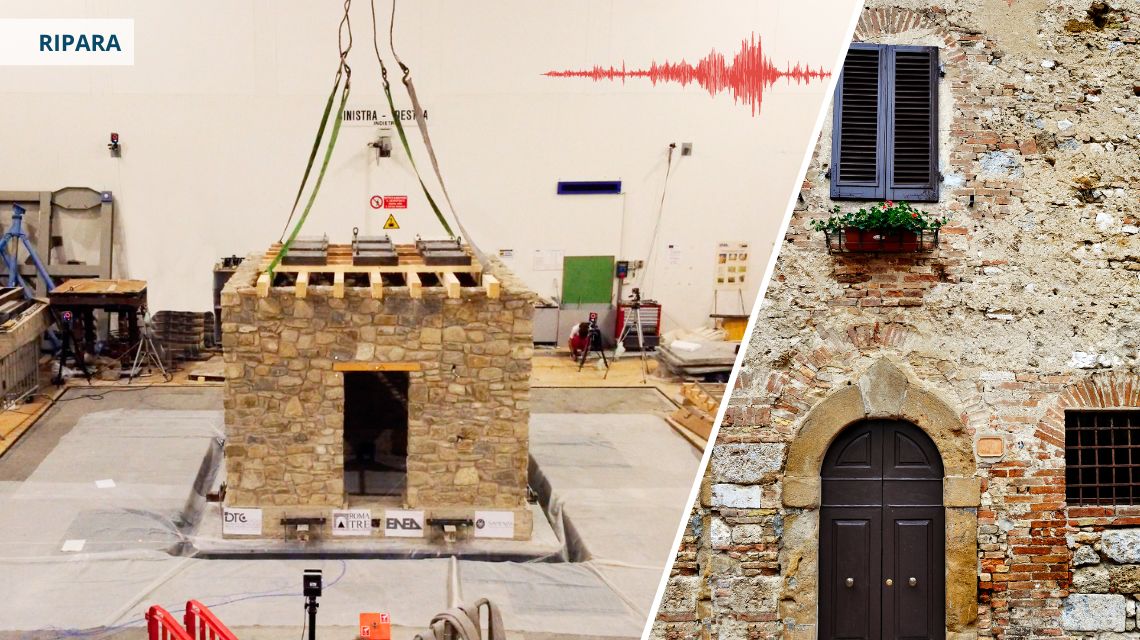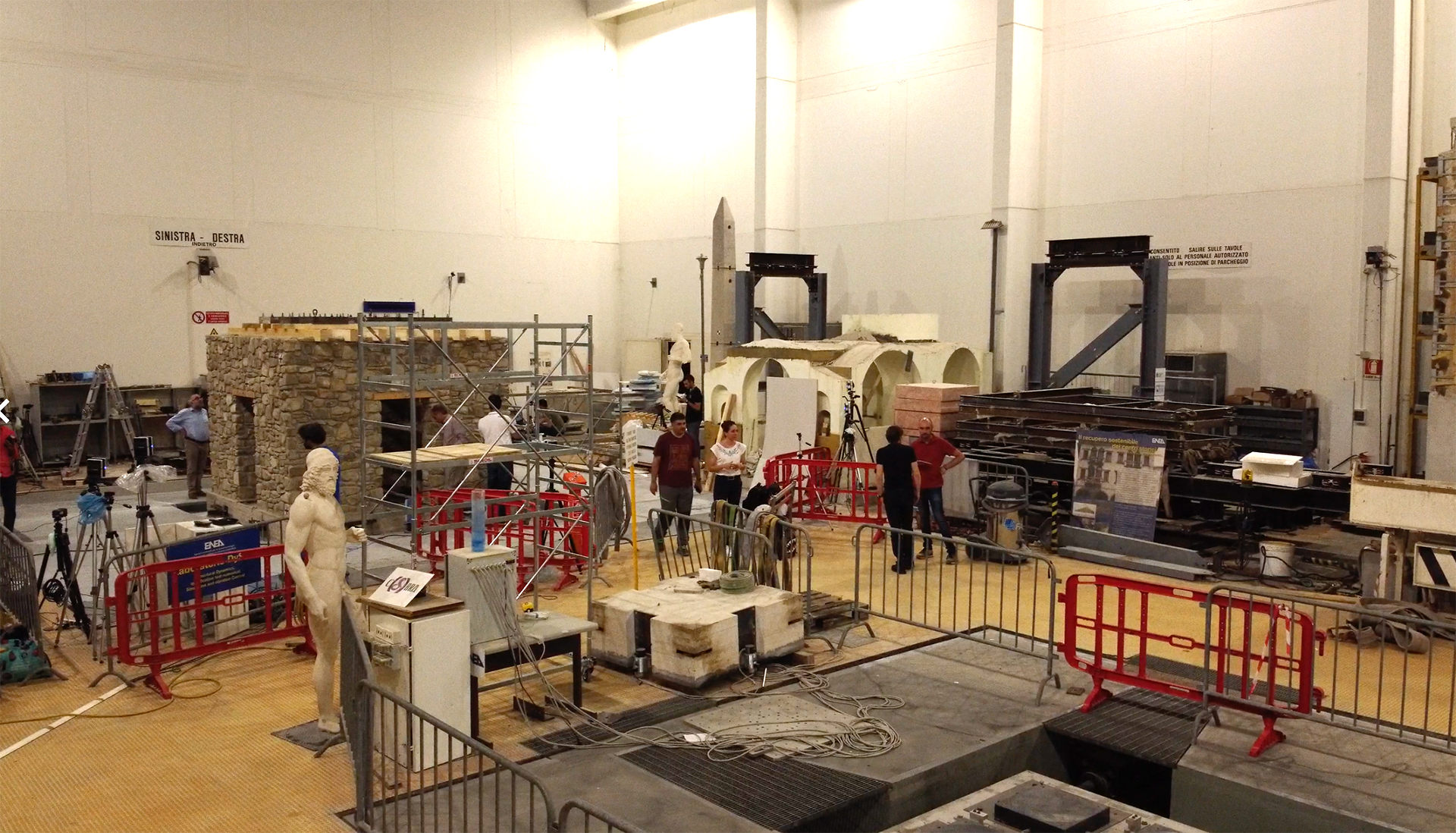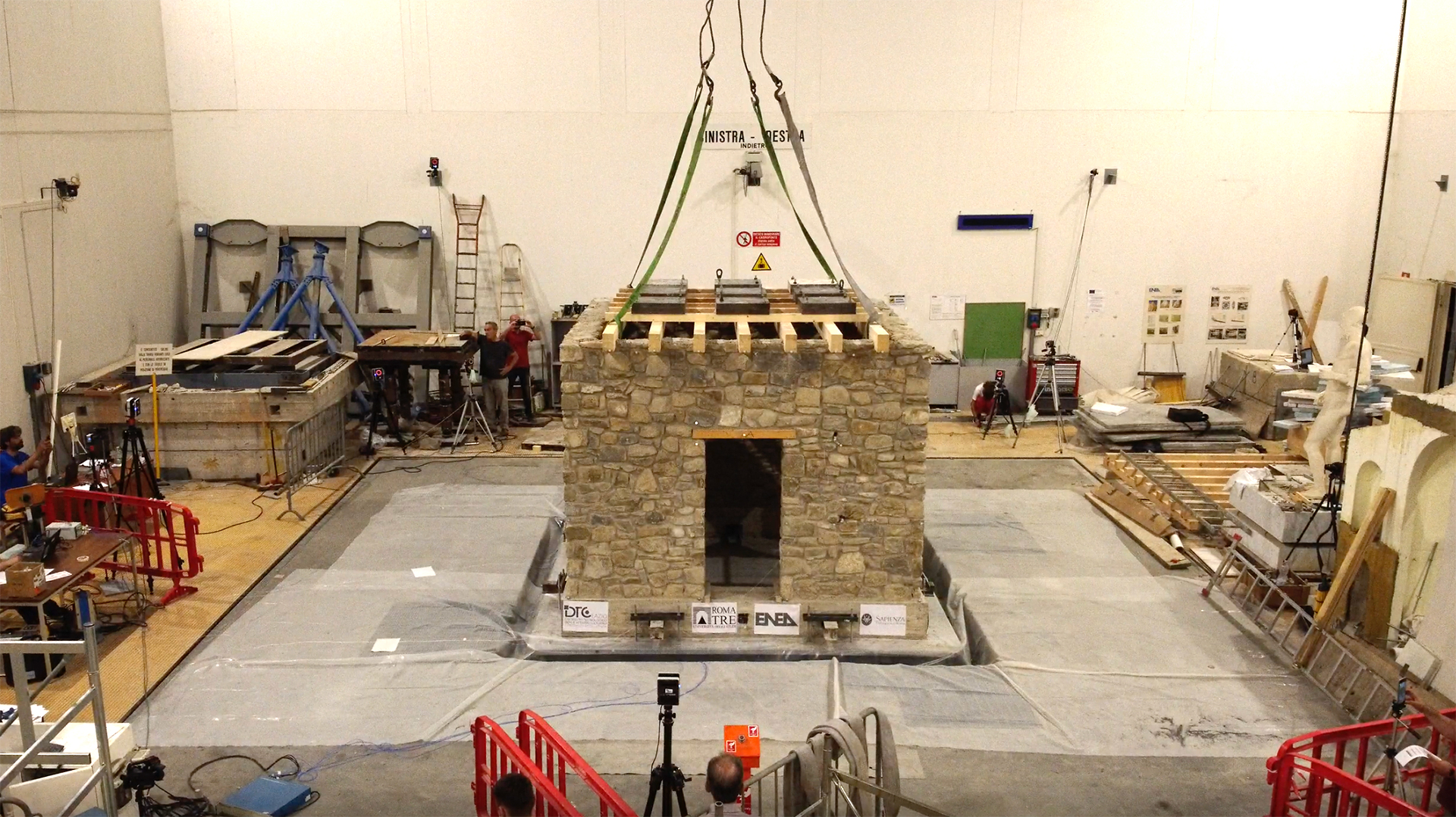Italian National Agency for New Technologies, Energy and Sustainable Economic Development

Earthquakes: Cutting-edge technologies for seismic upgrading of historic buildings
Reinforcing historic buildings with innovative anti-seismic technologies and advanced sensor solutions with minimal visual impact is the goal of the RIPARA project[1], funded by the Lazio Region within the Cultural Heritage Technology District (DTC), which comprises ENEA, EdilCAM Sistemi company and Universities of Cassino and Southern Lazio, Sapienza and Roma Tre (the latter as coordinator). The new technologies - validated on ENEA's shaking tables - will make the buildings capable of withstanding more than twice the accelerations of the 2016 earthquake.
In the first phase of the project researchers used stone elements collected from the rubble of buildings that collapsed following the 2016 earthquake, to replicate typical walls of historic buildings in the villages of central Italy, both for texture and mortar. The prototype wall, without reinforcements, was tested on the shaking tables at the ENEA Casaccia Research Center, where the same seismic shakings of the 2016 and 2017 Central Italy earthquakes were reproduced.
The walls were later repaired and reinforced with two innovative solutions: the first involved small keyholes integrated into the exposed brickwork to ensure the correct “pull” and retention of the walls; the second involved the application of metal strips between the mortar and the stones, invisible from the outside. Both solutions were integrated with an innovative monitoring system based on fiber optic sensors, created and installed by ENEA and the University of Roma Tre to monitor the steel strips – the structural ‘health’ of the building - and minimize the visual impact while ensuring reliability and durability.
The integrated system installed on the walls was subjected to the same violent accelerations of the earthquakes that hit our country about 8 years ago: while the wall without reinforcements reached a level of damage similar to the Collapse Limit State (SLC) with a peak ground acceleration of 0.5 g, i.e. half the acceleration of gravity, the reinforced wall showed double the resistance capacity of the one without reinforcement.
The outcomes obtained showed the effectiveness of the new anti-seismic technology, confirming that it could be the solution to reinforce historic stone buildings of central Italy, combining safety and conservation of ancient stone houses.
The shaking tables at the ENEA Casaccia Research Center are among the largest in Europe and at the forefront of instrumentation and analysis of vibration data acquired in seismic tests. Capable of moving in six spatial dimensions (three directions of movement and three rotations), they represent a unique infrastructure to test the most mature technologies for applications in civil and industrial engineering, construction and cultural heritage.
In 2007 the Laboratory of Analysis and Models for Critical Infrastructures and Essential Services where the shaking tables are located, was the first seismic engineering laboratory in the world to equip itself with a 3D motion capture system, still the most advanced of its kind in Italy, capable of measuring the displacement in 3D space of hundreds of points of the object to test, with an accuracy of less than a tenth of 1 mm and a sampling frequency of up to 2000 Hz. Since 2017 the laboratory capacity has been further strengthened, with the implementation of a new advanced processing technique derived from the magnified motion method, which amplifies, making them visible to the naked eye, even the smallest movements of objects, allowing to detect the parts most at risk of breakage or collapse.
For more information please contact:
Ivan Roselli, ENEA – Analysis and Modeling for Critical Infrastructures and Essential Services Laboratory,
Presentation video of the ENEA Vibrating Tables
Article published in the magazine EAI – Energy, Environment and Innovation”: Shaking tables and seismic protection of historical buildings and monuments


